In today’s fast-paced digital world, messaging is no longer limited to plain text or static images. People crave more expressive, dynamic ways to share moments—whether it’s a child’s laughter, the flicker of birthday candles, or a pet’s playful jump.
This shift has led to a surge in dynamic media formats, such as short-form videos, GIFs, and motion photos, that capture the energy of real-life moments.
Against this backdrop, one of the most popular messaging platforms is evolving yet again, with WhatsApp testing motion photo support for Android users. This upcoming addition is more than just a fun extra—it’s a step toward making chats more vivid and emotionally engaging.
By allowing photos to include a few seconds of movement and audio, WhatsApp aims to bring conversations closer to real life, making them warmer, more personal, and infinitely more memorable.
For Android users who have seen iOS Live Photos or Samsung’s Motion Photos in action, this WhatsApp update could soon deliver the same immersive experience without switching apps or platforms.
It’s a small change on the surface, but one that can make sharing memories feel far more alive.
Also Read: Why Google Merging ChromeOS with Android Is a Smart Move
What Are Motion Photos?

Motion photos are a hybrid form of media that blend the simplicity of a still image with the vibrancy of short video clips. Instead of freezing a moment into a single frame, a motion photo captures a few seconds of movement and, in many cases, accompanying sound—both before and after the shutter is pressed. This creates a richer, more lifelike snapshot of a moment, allowing the viewer to relive not just what something looked like, but also the energy and atmosphere surrounding it.
The concept isn’t new—other platforms have embraced it for years. Apple’s Live Photos have been available on iOS devices since 2015, letting users press and hold an image to see it come alive. Samsung offers a similar feature called Motion Photos, which records a short clip before you take the picture. Google’s Pixel devices have Top Shot, which captures a burst of frames to ensure you get the best possible moment.
With WhatsApp testing motion photo support, Android users could soon enjoy the same dynamic media experience right inside their favorite messaging app. This WhatsApp update means you won’t need to leave the platform or rely on third-party tools—those living, breathing memories could be captured, shared, and enjoyed all in one place.
Also Read: Zoho Launches Zia AI Model and Pre-Built Enterprise Agents
How Is WhatsApp Testing Motion Photo Support?
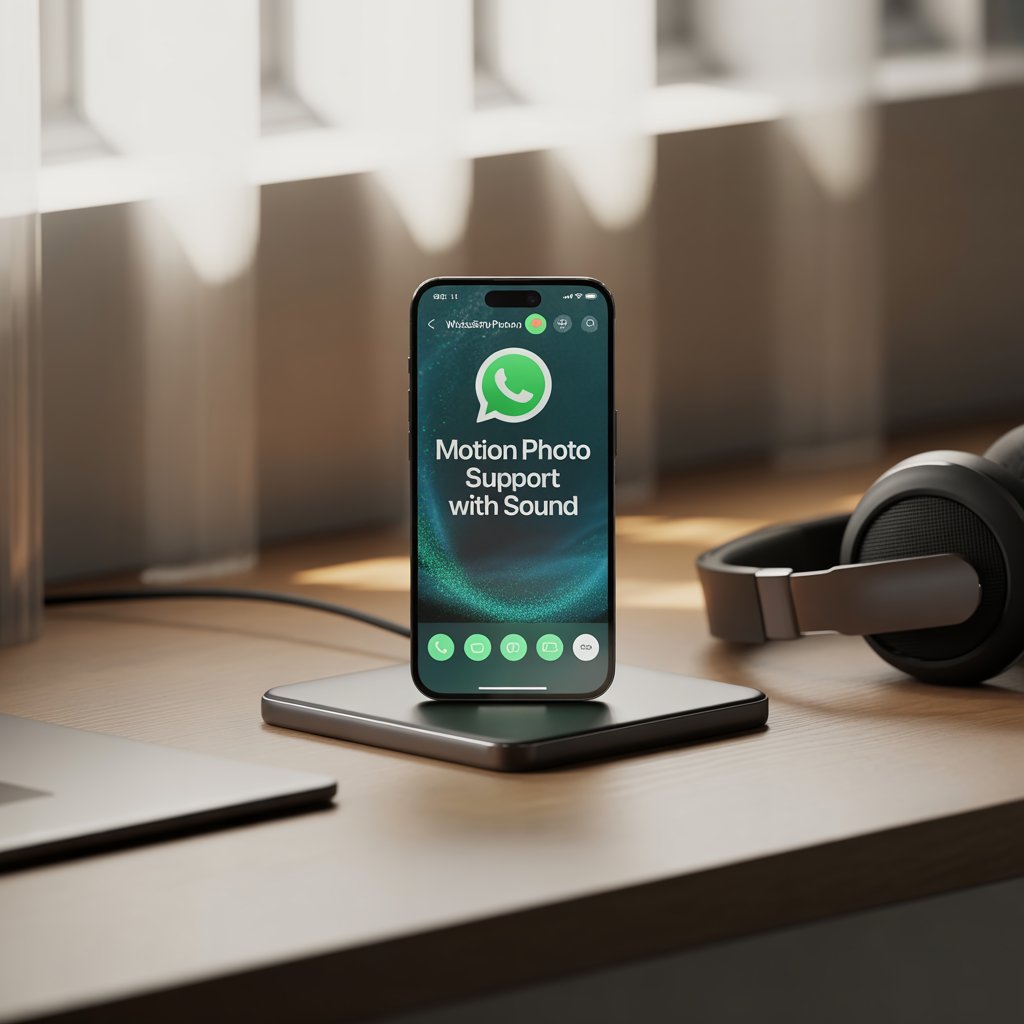
WhatsApp testing motion photo support first surfaced in select Android beta releases, notably versions v2.25.8.12 and v2.25.22.29. Early testers began noticing subtle but significant interface changes in the app’s media picker. One of the standout additions is a motion-photo icon in the gallery view, making it easy to spot which images contain movement.
Alongside this, thumbnails of such images now display a small motion badge, signaling that the photo isn’t just a still—it’s alive with short bursts of action and sound.
From a functionality perspective, this WhatsApp update goes beyond simply sending a moving image. When a motion photo is shared, it preserves both the captured movement and the original audio, delivering a far richer experience to the recipient. Even better, the feature is integrated natively, meaning you don’t have to convert files manually or use third-party apps. For moments when you prefer a simple still image, WhatsApp also offers the option to convert a motion photo to a static picture before sending.
This approach not only modernizes WhatsApp’s photo-sharing capabilities but also puts it on par with established media formats on iOS, Samsung, and Pixel devices—directly inside the messaging app most Android users already rely on daily.
Why “WhatsApp Testing Motion Photo Support” Matters
The news of WhatsApp testing motion photo support is more than just a flashy feature—it signals a meaningful shift in how people can share memories on the world’s most popular messaging app. By allowing both movement and audio to be preserved in a single file, this update makes conversations feel more alive and emotionally engaging. Imagine sending a birthday snapshot where the candles flicker and friends cheer in the background, or a travel photo where waves crash as you smile for the camera—that extra layer of motion transforms a simple image into an immersive story.
This WhatsApp update also helps the platform catch up with long-standing features on rival ecosystems. iOS users have had Live Photos for years, Samsung offers Motion Photos, and Google Pixel devices boast Top Shot. Until now, Android WhatsApp users often had to settle for static images or rely on workarounds like converting motion photos into short videos or GIFs before sharing—processes that can be time-consuming and strip away quality.
With native support, WhatsApp eliminates the need for third-party apps or conversions. It means less hassle, better quality, and a more seamless sharing experience—all without leaving the familiar green chat bubbles. For billions of users, this could be one of the most personal and practical upgrades in recent years.
How the Feature Works (Step-by-Step)
Here’s how the new feature works, based on what’s been observed in early beta testing of WhatsApp testing motion photo support:
- Capture a Motion Photo – First, use a compatible Android device that supports motion photos natively. This could be a Samsung phone with Motion Photos enabled, a Google Pixel with Top Shot, or another device offering similar functionality.
- Open WhatsApp – Launch the app and navigate to the chat where you want to share your memory.
- Select from the Gallery – Tap the attachment icon, open your phone’s gallery, and look for the images marked with the motion-photo badge introduced in this WhatsApp update.
- Send the Dynamic Version – Tap the motion-photo icon to ensure you’re sending the moving version with both visuals and audio intact.
- Enjoy the Playback – The recipient will see the image animate on their screen, complete with the captured sound, giving them a richer, more lifelike experience.
- Optional Static Mode – If you prefer to send just the still image, WhatsApp gives you the option to convert it into a static photo before hitting send.
This streamlined process means there’s no need to convert files, trim videos, or lose quality—making motion photo sharing as simple as sending any regular image.
Current Availability & Rollout Timeline
Right now, WhatsApp testing motion photo support is limited to a small group of beta testers on Android. Users running specific beta versions, such as v2.25.8.12 and v2.25.22.29, have reported seeing the new motion-photo icon and thumbnail badges in their gallery picker. This selective release allows WhatsApp to monitor performance, fix bugs, and refine the experience before a wider rollout.
As with many WhatsApp updates, the company is taking a gradual approach. Over the coming weeks, more beta testers are expected to gain access, ensuring the feature works smoothly across different devices and Android versions. This step-by-step rollout strategy also helps maintain app stability while introducing new functionality.
At present, there’s no confirmed date for a full public launch. However, given that the feature is already functional in beta and aligning with WhatsApp’s history of moving promising features to general release, it’s likely that all Android users will see motion photo support in the near future. For now, the best way to try it early is by joining WhatsApp’s beta program—if spots are still available.
User Benefits & Use Cases
With WhatsApp testing motion photo support, everyday moments can be shared with more depth and emotion than ever before. Unlike static images, motion photos let you preserve the sounds and subtle movements that make a memory truly unforgettable. A still shot of a child’s smile is heartwarming—but when you can hear the giggle and see the quick sparkle in their eyes, the moment comes alive.
This WhatsApp update is especially powerful for capturing emotional, candid moments such as bursts of laughter, genuine surprise, or a group cheer during a celebration. It’s perfect for birthdays where candles flicker, weddings where petals fall, travel adventures where waves crash, or even playful moments with pets as they bound toward the camera.
Beyond preserving memories, motion photos also add more life and personality to everyday WhatsApp conversations. They break the monotony of static images, spark reactions, and make chats feel warmer and more human. Whether you’re sharing milestones or everyday magic, this feature turns each photo into a miniature story—one that both you and your friends can revisit, complete with sights and sounds.
Potential Limitations
While WhatsApp testing motion photo support is an exciting step forward, there are a few limitations to keep in mind.
First, the feature depends on your device’s ability to capture motion photos in the first place. Phones like Samsung Galaxy models, Google Pixel devices, and some other Android brands already support this, but older or budget models may not. Without native motion-photo capability, you won’t be able to create the kind of media this WhatsApp update is designed to share.
Second, the rollout is still in its beta phase. That means not everyone will have access right now, and even those who do may experience occasional glitches or performance issues as WhatsApp fine-tunes the feature.
Lastly, compatibility plays a role in the recipient’s experience. If you send a motion photo to someone using an older device or a platform that doesn’t support playback, they might only see the static version of your image. While the photo will still display, the movement and audio—the key elements that make it special—won’t come through.
In short, the feature is promising, but it will shine brightest once it’s available to all users and supported widely across devices.
Conclusion
With WhatsApp testing motion photo support, the platform is taking a meaningful step toward making conversations richer, more expressive, and more personal. By blending still photography with movement and sound, this WhatsApp update transforms simple image sharing into an interactive storytelling experience—one that captures the little details static photos often miss.
Given the popularity of similar features on iOS, Samsung, and Pixel devices, it’s easy to see why this addition is likely to resonate with millions of Android users. Once it moves beyond beta and becomes widely available, motion photo support has the potential to become one of WhatsApp’s most loved features, adding a new layer of emotion and connection to everyday chats.
It’s a small change in technical terms, but one that could have a big impact on how we share our most treasured moments.

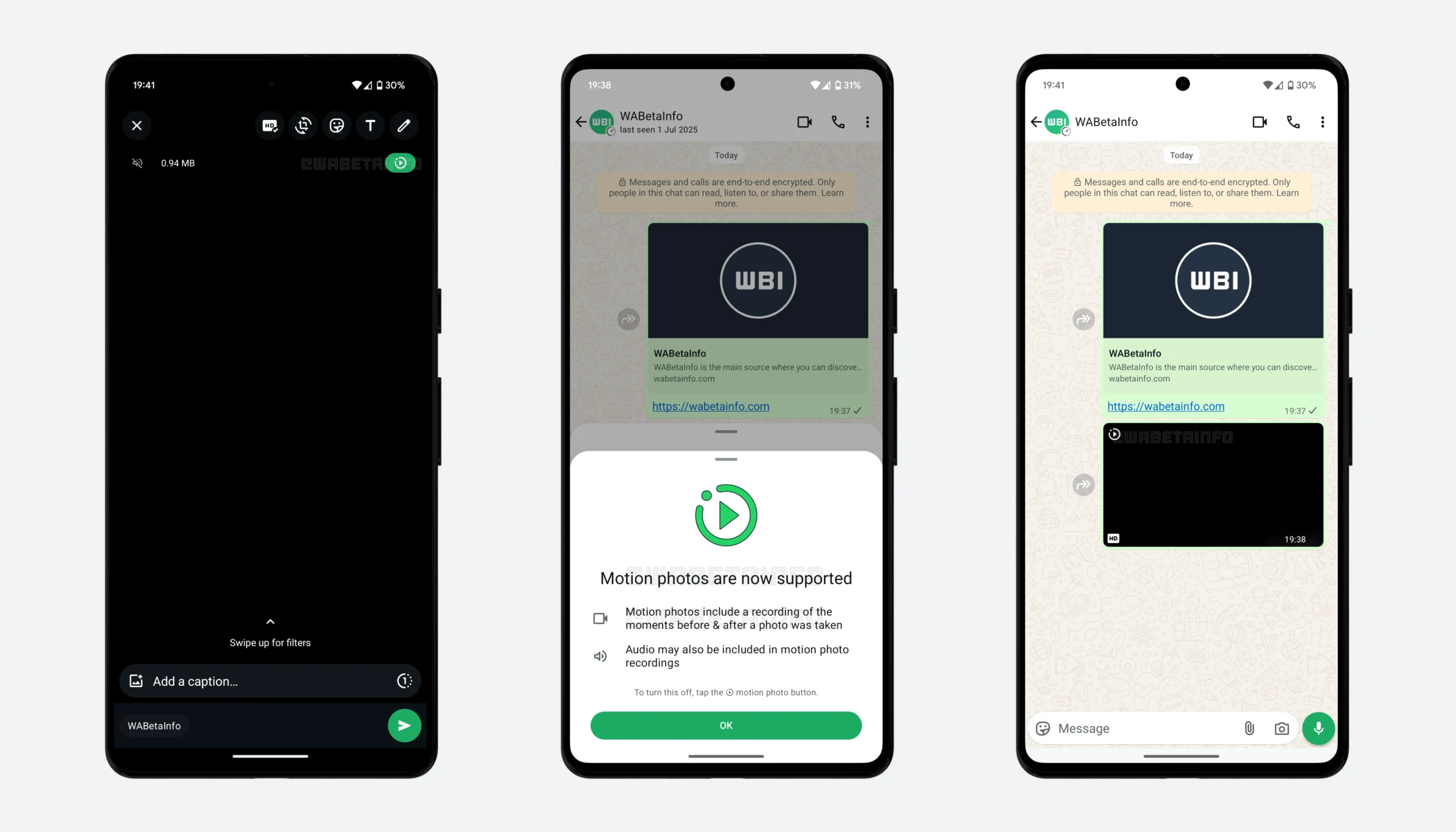
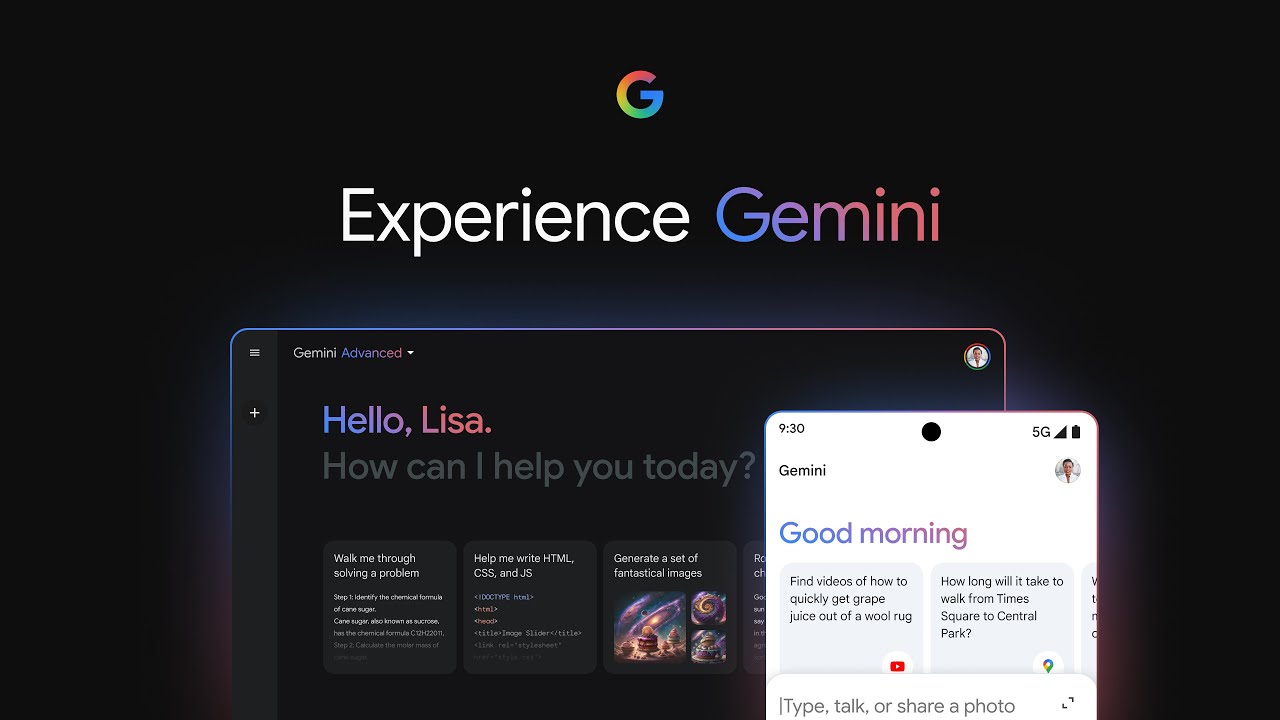
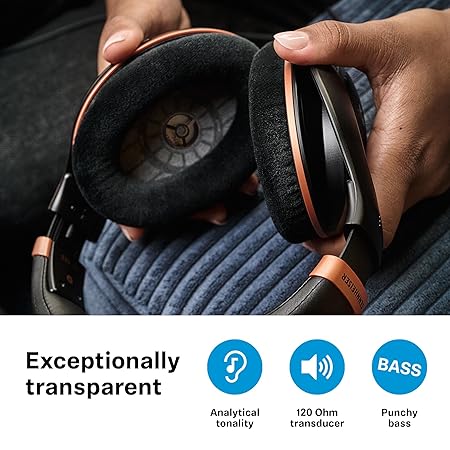
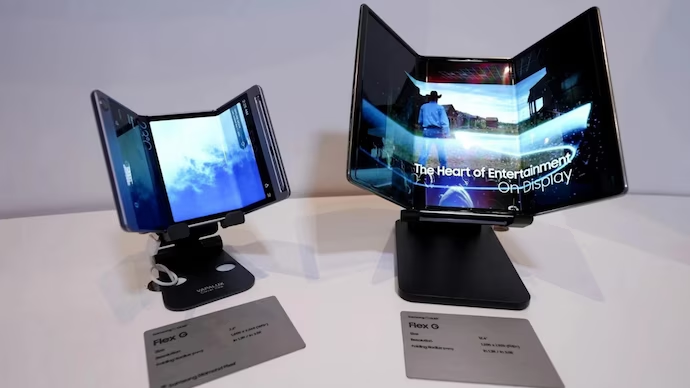
One thought on “WhatsApp for Android Reportedly Testing Motion Photo Support With Sound”